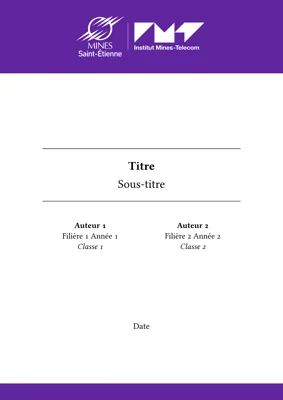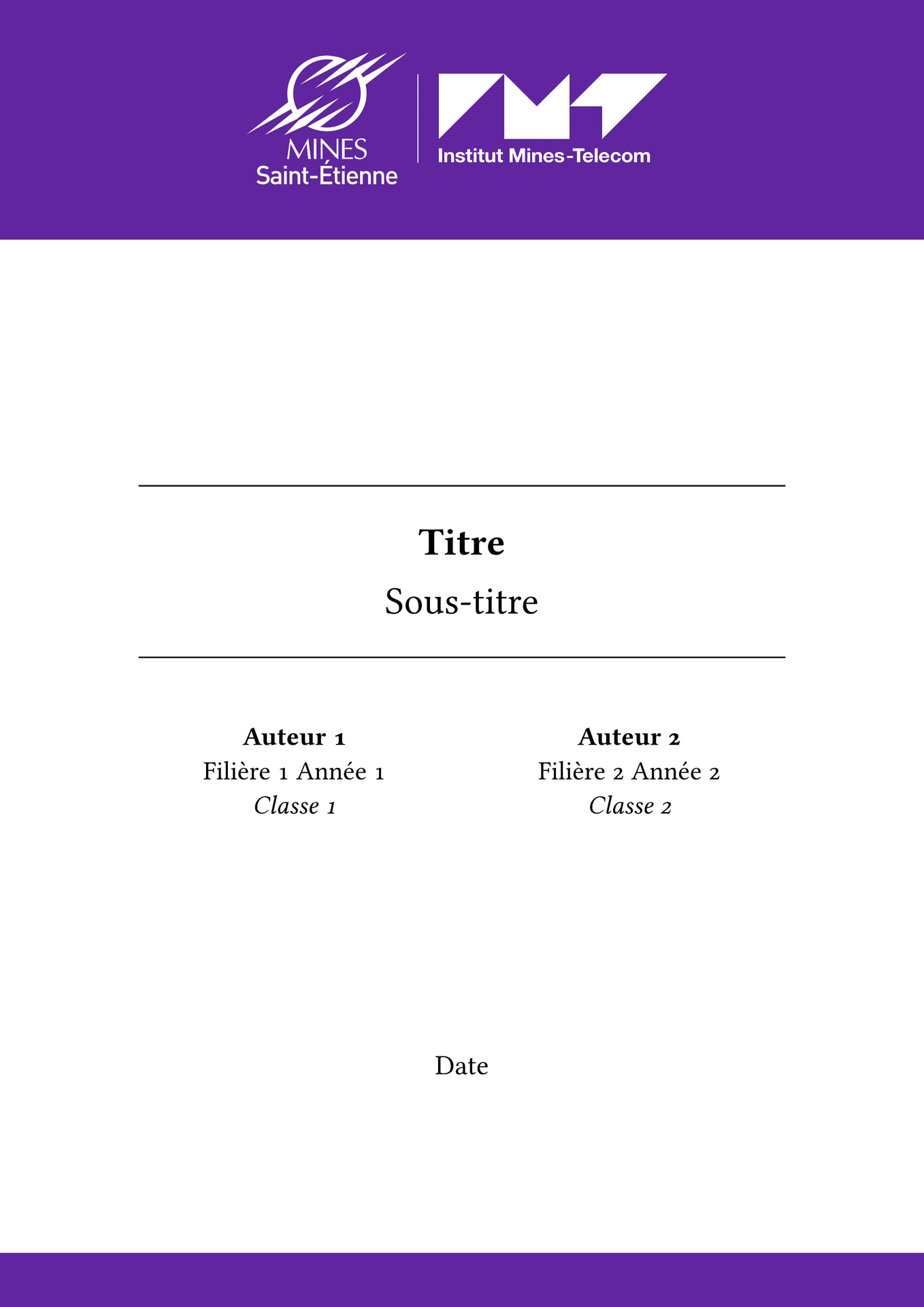This template is the one I use to write my reports at the EMSE. It uses the Typst language and is largely inspired by Timothé Dupuch’s template, the Bubble template, the ilm template, and finally the Diatypst template. Many of the typography rules were taken from Butterick’s Practical Typography.
The template_report_ISMIN.pdf file in the GitHub repository is a PDF preview of the compilation result.
I tried to show all the possibilities that Typst offers, with the content obviously being adjustable as you wish.
To learn more about Typst functions and usage, you can use the documentation, it’s very comprehensive. Ctrl+Click (or Cmd+Click) also works on functions (in the web application editor).
Usage
Copy the following code at the beginning of the document:
#import "@preview/manuscr-ismin:0.1.0": *
#show: manuscr-ismin.with(
title: "Title",
subtitle: "Subtitle",
authors: (
(
name: "Auteur 1",
affiliation: "Filière 1",
year: "Année 1",
class: "Classe 1"
),
(
name: "Auteur 2",
affiliation: "Filière 2",
year: "Année 2",
class: "Classe 2"
)
),
logo: "assets/logo_emse_white.svg",
header-title: "Header 1",
header-subtitle: "Header 3",
header-middle: [Header 2],
date: "Date"
)
For the logo, you can either get the one in the GitHub repository or go the the EMSE intranet.
manuscr-ismin
Here’s a description of the manuscr-ismin function parameters:
title: the document title (required)subtitle: the subtitleauthors: authors field in dictionary form; to use only one author, don’t forget to still leave a comma at the endname: the author’s nameaffiliation: the author’s departmentyear: the author’s year in their curriculumclass: the author’s class
date: the datelogo: the logo you want to use; by default, it’s the EMSE logomain-color: the document’s theme color; by default, it’s “violet EMSE”header-title: the left text in the headerheader-middle: the centered and bold text in the headerheader-subtitle: the right and italic text in the headerbody-font: the font for body text; by default, it’s Libertinus Serif but for a LaTeX look, use New Computer Moderncode-font: the font for therawfunction; by default, it’s Cascadia Mono but for a really LaTeX look, use New Computer Modern Monomath-font: the font for theequationfunction; by default, it’s New Computer Modern Mathmono-font: the font for the non-nativemonofunction; by default it’s Libertinus Mono (use a monospace font)number-style: the number style; by default in"old-style"(so oldstyle figures), can be changed to"lining"(classic figures)
Functions
violet-emse: EMSE’s purple colorgray-emse: EMSE’s gray colorlining: to have numbers in classic style locally if you chose “old-style”; oldstyle figures integrate well with lowercase text, but poorly with uppercase text. For example,#lining[STM32L436RG]will be much more elegant thanSTM32L476RGif you’re using oldstyle figures by default.arcosh: the hyperbolic arc cosine function for math modemono: to use for quickly returning monospace text without the formatting ofraw. To use for example to indicate file names:toto_tigre.png
Aside from that, the template also replaces points with commas in math mode, so just use a point to render decimal numbers (commas insert a space after the number); for instance :
$ y: x arrow.r.bar 2.3 x + 5.7 $

